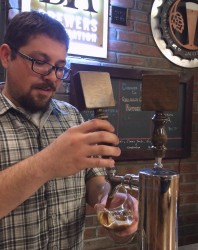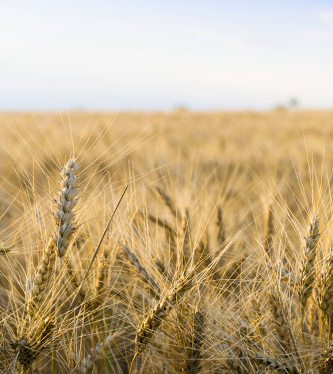With the number of American small and independent craft breweries tipping 3,400, the demand for more, unique and efficient beer ingredients continues to grow. Brewing scientists are hard at work helping suppliers keep up with brewery demands. Here’s a quick look at just a few of the developments in the world of beer ingredients.
Hops
The craft beer industry seems to be obsessed with hops. Hop heads and brewers alike find the complex flavors and aromas that hops bring to a beer interesting and enjoyable. With all of the varieties available both publicly and proprietarily, the combinations are seemingly endless. Growers are working to create even more new breeds of hops due to the high demand from craft brewers.
According to The New Brewer (Vol. 31 No. 6 Article “Ground Breaking: Cultivating New Hop Varieties” by Stan Hieronymus) “Growers in several states—notably New York, Michigan, Wisconsin, California, and Colorado—have invested in the infrastructure to grow and process hops on a serious scale. These newer growers are bringing local beer to a new and exciting level. These states have already found ways of distinguishing their varieties from others.
Although hops are the main way brewers today are crafting unique beers, other segments of brewing related agriculture have caught on to the demand for unique and new styles of beer as well.
Barley
In “Barley Breeders Target Varieties for Craft Brewers” John O’Connell says that, “Barley breeders are re-evaluating breeding lines big breweries have rejected in the past and advancing specialized lines to meet the growing demand for craft beer. Domestic malt barley varieties just weren’t bred with small craft breweries like New Glarus in mind.”
Growing new breeds of barley with lower protein levels and different levels of free amino nitrogen can greatly impact the brewing process for small and independent craft brewers. Barley specifications have generally been grown to cater to the giant breweries that supplement grain bills with adjuncts such as rice and corn, which is less common with craft brewing practices simply because craft brewers prefer malts that lend richer flavor to the beer. It will be exciting to see what becomes available for brewers in the future.
Yeast
Yeast, possibly the most important addition, as there would be no beer with out, is also being experimented with in ways that could change how brewers ferment their beers. Scientists are now working to create new yeast strains that will not only give brewers more options, they will also potentially save them money and time.
New hybrid yeast strains are being developed to maximize fermentation time and reduce less enjoyable off flavors and aromas produced as byproducts of fermentation.
In the Popular Science article “Bottling a Better Beer with New Yeast Strains,” Jason Tetro says “The success of the experiments opens a new door to a wider diversity of beers in the future. Though the new [yeast] varieties made in the lab may not find their way onto shelves anytime soon, they represent the beginning of a potential industrial renaissance. By focusing on natural hybrids to improve beer flavor, alcohol content and even fermentation time, the overall brewing culture has the opportunity to improve. As for drinkers, the chance to enjoy even more flavorful options may soon be a reality.”
 Ben Zeller is a homebrewer, beer and food enthusiast, certified beer server and is the current Craft Beer Program Intern for the Brewers Association. He is also a new father, skier and currently a student at MSUD, anticipating graduation this December. He hopes to learn as much as he can during his time with the BA and continue his career in the craft beer world.
Ben Zeller is a homebrewer, beer and food enthusiast, certified beer server and is the current Craft Beer Program Intern for the Brewers Association. He is also a new father, skier and currently a student at MSUD, anticipating graduation this December. He hopes to learn as much as he can during his time with the BA and continue his career in the craft beer world.
CraftBeer.com is fully dedicated to small and independent U.S. breweries. We are published by the Brewers Association, the not-for-profit trade group dedicated to promoting and protecting America’s small and independent craft brewers. Stories and opinions shared on CraftBeer.com do not imply endorsement by or positions taken by the Brewers Association or its members.

Share Post